"Bodhi Verses"
Tang Dynasty Master Huineng
Bodhi has no tree, and the mirror is not a stand.
originally had nothing, so where could it cause dust?

Schematic diagram of the evolution of Buddhist architecture
Buddhism was founded by Sakyamuni in the middle of the Ganges River Basin in ancient India. During the ancient Mauryan Dynasty King Ashoka, it began to spread to surrounding countries, eventually affecting Sri Lanka and Southeast Asian countries in the south, and reaching as far north as Pakistan, Afghanistan and other countries, Syria and other Middle East regions in the west, and east to China, Japan and other countries, gradually developed into a world religion, and is known as one of the world's three major religions together with Christianity and Islam .
Buddhism was introduced to the Central Plains during the Eastern Han Dynasty and was regarded as a kind of magical magic. During the Wei, Jin, Southern and Northern Dynasties, it developed rapidly with the support of the royal family. It entered its heyday during the Sui and Tang Dynasties and completed the evolution of localization. It continued to spread eastward to Japan, Korea, Vietnam and other countries, becoming the center of Buddhism in East Asia. After the Tang Dynasty, Buddhism began to penetrate deeply into the common people, and sought the unification of sects and the integration of Confucianism, Buddhism, and Taoism.
With the establishment of the Mongolian Yuan regime, the Buddhist sect that integrated the unique local culture of Tibet began to rise and was respected by the Mongolian Yuan ruling class. It was called Tibetan Buddhism. The Buddhism that originally spread in the Central Plains was called Han Buddhism. Buddhism , together with Theravada Buddhism in the Yunnan region of southern China, constitutes the three major systems of Chinese Buddhism .
Background

Explanation of Dharma under the Bodhi tree
In the 6th century BC, the ancient Kapilavastu Kingdom [now Tirolakho, Nepal]The Sakya clanPrince Gautama Siddhartha in Bodh GayaUnder a Bodhi tree After enlightenment and becoming a Buddha, he founded Buddhism. He was revered as Sakyamuni, which means "Saint of the Sakyamuni tribe". He opposed theocracy and advocated that all people are born equal. Good will be rewarded with good and evil will be rewarded with evil. He pursued personal self-salvation and advocated Live in seclusion.

Schematic diagram of the division of Buddhist periods
After Sakyamuni's nirvana, the monks strictly adhered to the existing precepts, did not worship gods, did not make statues, mainly begged, and dictated teachings, regardless of school. In the Ganges River in the north of ancient India Missionaries were preached in the basin, and this period was called the primitive Buddhist period.
At the beginning of the fourth century BC, there were differences in views on the precepts within Buddhism, and two major sects were formed: Theravada and Mass Buddhism. Among them, the Theravada sect is mainly composed of monks with more traditional ideas and believes that the existing precepts cannot be changed and must be strictly observed; the Popular sect is mainly composed of ordinary monks, so it is named because of its large number of people. On the premise of deviating from the basic precepts, make adjustments according to the actual situation and do not be too rigid. This difference in principle was difficult to bridge, and eventually Buddhism split for the first time into the Theravada sect and the Mass sect. This period was called the period of sect Buddhism.

Schematic diagram of the expansion of Alexander's empire
In 334 BC, Alexander the Great After pacifying Greece , he started a 13-year Eastern Campaign and successively conquered Syria, Phoenicia , Egypt , Persia , etc. The countries of Central Asia and North Africa expanded eastward to the Indus River Basin, including the three ancient civilizations of ancient Egypt, ancient Mesopotamia and ancient India, and established a geographically diverse region spanning Europe, Asia and Africa. The super empire opened up trade routes between the East and the West and promoted exchanges between Eastern and Western civilizations, especially the widespread spread of Greek culture.
In 317 BC, Chandragupta led the Indians to defeat Alexander's imperial army and established the Mauryan Dynasty. In its heyday, it almost unified the entire South Asian subcontinent. As the third king Ashoka established Buddhism as the state religion, he summoned Buddhist monks to compile Buddhist scriptures, build monasteries and pagodas, and dispatched many monks to preach Buddhism to neighboring countries, which promoted the spread of Buddhism to the entire South Asian subcontinent, Southeast Asia, and Central Asia. , began to develop into a world-wide religion.Among them, the Sangha led by King Ashoka's son Mohata introduced Theravada Buddhism into Sangha [today's Sri Lanka]. Later, it entered Southeast Asian countries along the ancient Maritime Silk Road, starting the spread of Theravada Buddhism.

The Kushan Empire and the Silk Road
In 174 BC, the Yuezhi tribe living in the Hexi Corridor of China was defeated by the XiongnuLao Shanyu, and was forced to migrate to the Western Regions and Central Asia, and annexed After the Kingdom of Bactria (Kingdom of Bactria), the Great Yuezhi Kingdom was established centered on the Amu Darya River and the Syr Darya River, and was later divided and ruled by five tribes. Around AD 45, Kushan, one of the five Xihous, proclaimed himself king after annexing other Xihous. The country was named Guishuang and started a series of foreign expansion wars. In its heyday, its territory stretched from the border of Iran in the west to the border in the east. To the middle reaches of the Ganges River, starting from the Syr Darya River in the north and reaching the Nabada River in the south, the capital was located in Fulusa [today's Peshawar, Pakistan] in the ancient Gandhara Kingdom. It was closely related to the contemporary Roman Empire and the Parthian Empire (Persia). Shan Empire) and the Eastern Han Empire were collectively known as the Four Great Empires.
The Kushan Empire respected Buddhism as its state religion and built pagodas and temples in its capital, Fulusa [today's Peshawar, Pakistan]. This attracted a large number of Indian Buddhist monks to come to preach the Dharma, and the previously orally recited Buddhist scriptures were written down and gradually developed into In Buddhist holy places where incense is flourishing and philosophical, religious and artistic centers where scholars gather, new Buddhist ideas and Buddhist architectural forms began to emerge. The most important thing was that concrete statues of the Buddha began to appear.

Schematic diagram of Gandhara art style Buddha statues
Fulusa, the capital of the Kushan Empire [today's Peshawar, Pakistan], historically belonged to the ancient Gandhara Kingdom. It was located in the northwest of the South Asian subcontinent and was a transportation hub for the South Asian subcontinent, Central Asia and West Asia. Location, under the long-term rule of Persian Empire and Alexander Empire, was deeply influenced by Persian culture and Greek culture, especially the influence of Greek sculpture art. With the rise of Buddhism, Buddhists in the Kushan Empire began to sculpt Buddha statues, which initially appeared in the form of reliefs on the base of pagodas. Later, free-standing, Greek-style Buddha statues began to appear. This fusion of Greek The self-contained style with three elements, Persian and Indian, is called Gandhara style. The typical representative is the statue of the Bamiyan Buddha in Afghanistan today.
With the widespread spread of Buddhism, some new ideological doctrines and sects of doctrines and rules have been formed within Buddhism. Different from the traditional purpose of self-improvement and liberation, it has transformed into the purpose of "universal salvation of all living beings" and calls itself Buddhism. "Mahayana Buddhism" refers to the original Buddhist sect as "Theravada Buddhism".
"Cheng" is the free translation of Sanskrit yana, which means "carrying", that is, like a boat, it helps people practice and reach the other shore of Buddha. Theravada Buddhism only recognizes Sakyamuni as the only Buddha, and practice means staying away from worries and desires, pursuing personal liberation, emphasizing self-improvement, self-interest and liberation; Mahayana Buddhism believes that in addition to the Buddha, in the three lives (past, present and future ) and the ten directions (east, south, west, north, southeast, northeast, southwest, northwest, above and below) there are countless Buddhas, emphasizing the universal salvation of all living beings and saving all people in the world from the sea of suffering. Around the first century BC, Mahayana Buddhism developed rapidly and became a mainstream sect, occupying a dominant position, thus starting the period of Mahayana Buddhism.
Around the 7th century AD, Hinduism in India flourished, while Mahayana Buddhism gradually became separated from the masses due to its speculative and cumbersome style. In order to adapt to the new situation, Mahayana Buddhism began to learn from and absorb Brahman Hindu ideas and methods such as mantras, religious rituals and yoga physical training, thus forming a relatively independent religious sect. Therefore, it was called Tantric Buddhism, and the previous Mahayana Buddhism was called Sutra Buddhism. Buddhism began to enter the Tantra Buddhism period.
Esoteric Buddhism regards Mahayana Buddhism as the primary stage, and itself is the advanced stage. It puts forward the doctrine of "become a Buddha instantly", that is, you can become a Buddha in this life, thereby avoiding the suffering of reincarnation. It is based on the ancient Indian Landa The temple and Chaojie Temple developed rapidly and spread as the center.As Shantarakshita, Padmasambhava and other eminent Indian Buddhist monks came to Tibet to spread the Dharma, Tantra was introduced to the Tibetan area. After being integrated with the local Bon religion, it formed a unique Tibetan Buddhism.

Schematic diagram of the Buddhism transmission route
At this point, the three major branches of Buddhism, Northern Buddhism , Southern Buddhism and Tibetan Buddhism, have basically taken shape. Their main transmission channels can be roughly divided into the southern route, the northern route and the eastern route:
- the southern route ( Theravada Buddhism)
As early as the time of King Asoka of the Mauryan Dynasty, Theravada Buddhism had been introduced southward to Sri Lanka. Later, through the Maritime Silk Road, it was introduced to Myanmar, Thailand, Cambodia, Laos and other Southeast Asian countries and The Yunnan region of China, as far away as Malaysia, Indonesia, Singapore and other Malay Islands countries, is also known as Theravada Buddhism.
- Northern Line (Northern Buddhism)
After Buddhism spread north to the Kushan Empire, which is now Pakistan, Afghanistan and other Central Asian countries, with Gandhara [now Pakistan] as the center, it spread eastward through the ancient Silk Road, crossing Congling. [today's Pamir Plateau ] was introduced to the Western Regions [today's Xinjiang Province] and into the hinterland of the Central Plains. After integrating with traditional Chinese thought, Han Buddhism with Chinese characteristics was formed, and was later introduced to North Korea, Japan, and neighboring countries such as Vietnam.
- Eastern Front (Tibetan Buddhism)
In the middle of the 7th century AD, Songtsen Gampo sent ministers to Nalanda Temple in ancient India to study Sanskrit and Buddhist scriptures. Based on this, he created Tibetan and translated some Buddhist scriptures. Buddhism Beginning to become popular in Tubo . After that, with the arrival of many eminent Indian monks such as Shantarakshita and Padmasambhava to Tibet to promote Buddhism and the construction of Samye Monastery, Buddhism began to flourish.
Around the 10th century AD, Buddhism suffered a devastating blow after the "Langdama Extinction". After Atisha and other Indian monks spread the Dharma, especially after integrating it with the native Bon religion in Tibet, it formed a unique The distinctive Tibetan Buddhism revived and became popular in Tibet. Later, during the Mongolian and Yuan Dynasties, with the support of the royal family, it began to gradually spread to Mongolia and the Central Plains.

Famous Buddhist temple buildings and sites
Early Tang Dynasty Xuanzang Journey to the West was the last glory of Buddhism in Central Asia and ancient India. With the prosperity and eastward expansion of Islam, Buddhism began to gradually decline. In the 11th century AD, during the Northern Song Dynasty, the Turks who believed in Islam invaded northern India and established the Delhi Sultanate, forcing the local people to embrace Islam. The Buddhist buildings were also completely destroyed. Buddhism suffered devastating damage.
Around the 13th century AD, as the South Asian subcontinent was completely conquered by Islam, and famous Buddhist temples such as Nalanda Temple and Chaojie Temple were burned one after another, ancient Indian Buddhism died out. As the state religions of countries in the Western Regions and Southeast Asia were successively replaced by Islam, the influence of Buddhism as a whole showed a trend of decline and contraction.
However, Theravada Buddhism, Tibetan Buddhism and Chinese Buddhism in China, which spread to Southeast Asian countries, continued to develop and flourish after being deeply integrated with local traditional culture. A large number of famous Buddhist buildings have sprung up like bamboo shoots after a rain. emerge like.
To be continued.
statement: The base image used in this article comes from the Internet. If there is any infringement, please inform us.




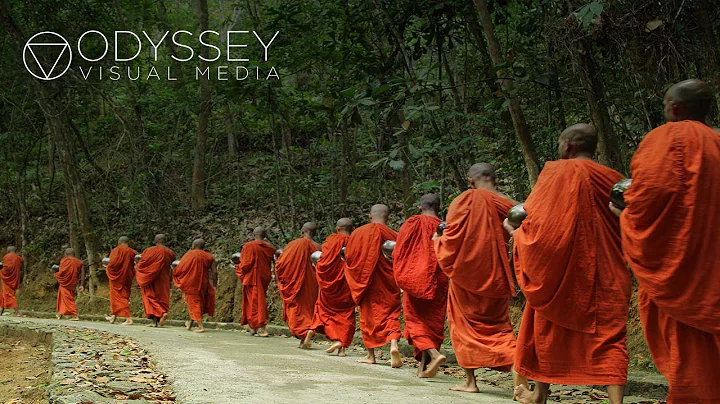
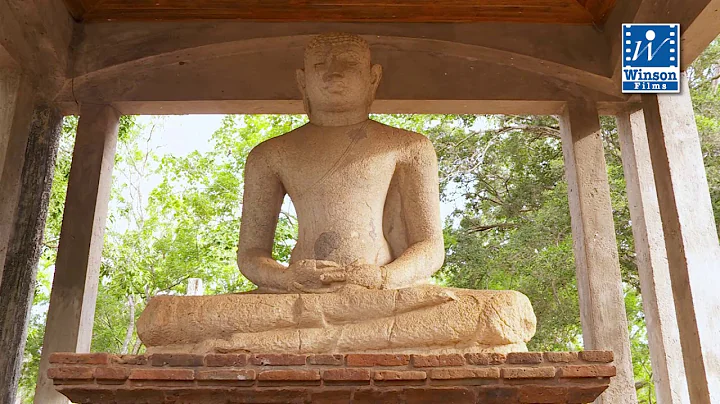

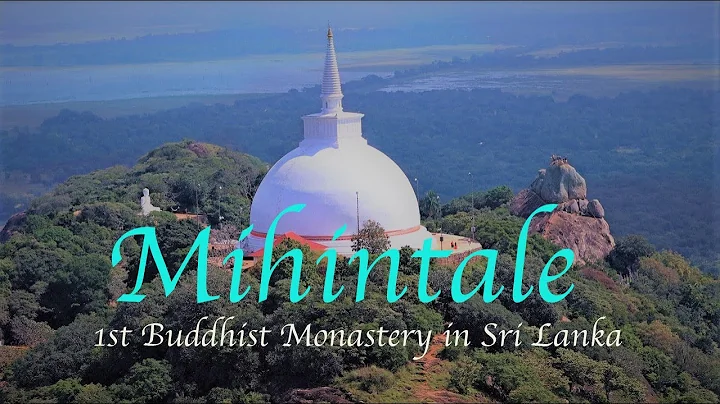
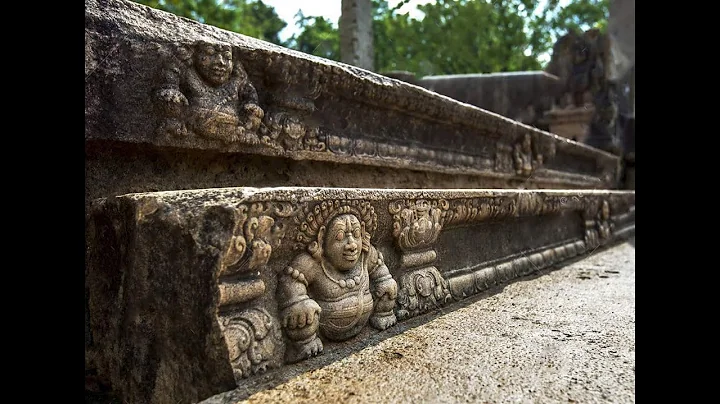
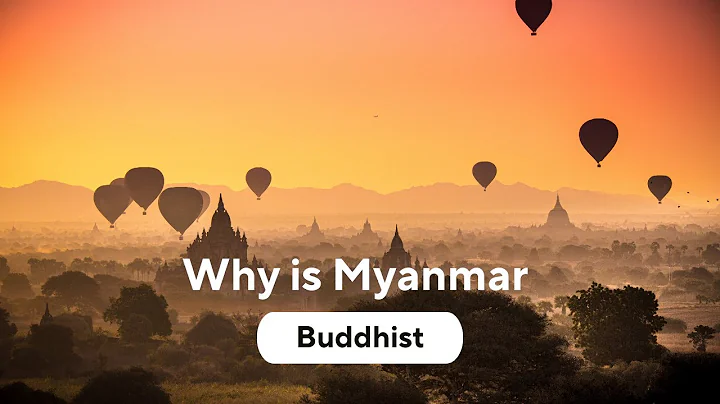


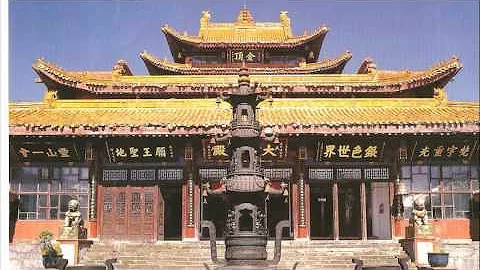

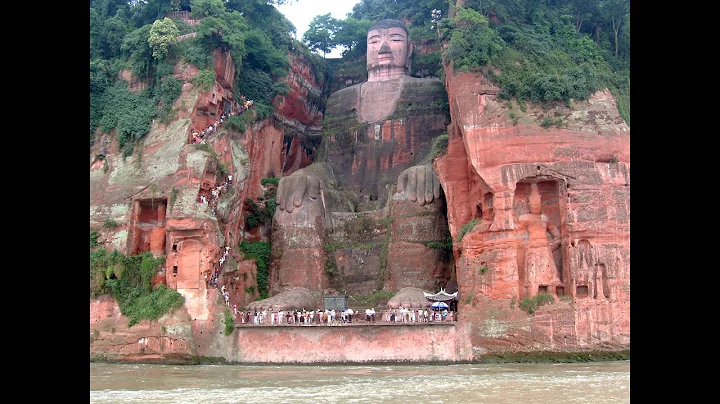



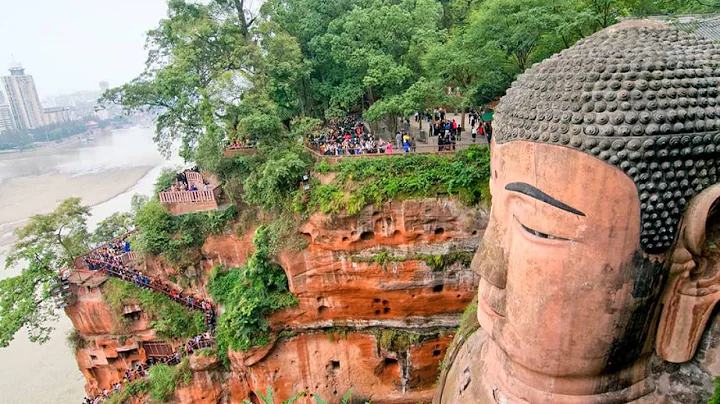

![[Cantonese] 中国世界遗产 峨眉山 乐山大佛 Mount Emei Scenic Area, including Leshan Giant Buddha Scenic Area - DayDayNews](https://i.ytimg.com/vi/9WledSTxsX0/hq720.jpg?sqp=-oaymwE2CNAFEJQDSFXyq4qpAygIARUAAIhCGAFwAcABBvABAfgB_gmAAtAFigIMCAAQARhlIGEoSDAP&rs=AOn4CLCoGhGCp2nTfRoe7TrpC4J47TIB9w)
![Leshan Giant Buddha, Sichuan, China [Amazing Places 4K] - DayDayNews](https://i.ytimg.com/vi/_hxbHP2_3K8/hq720.jpg?sqp=-oaymwEcCNAFEJQDSFXyq4qpAw4IARUAAIhCGAFwAcABBg==&rs=AOn4CLAxqcRnbjviVqnzoZj-oDBVYGrSNw)